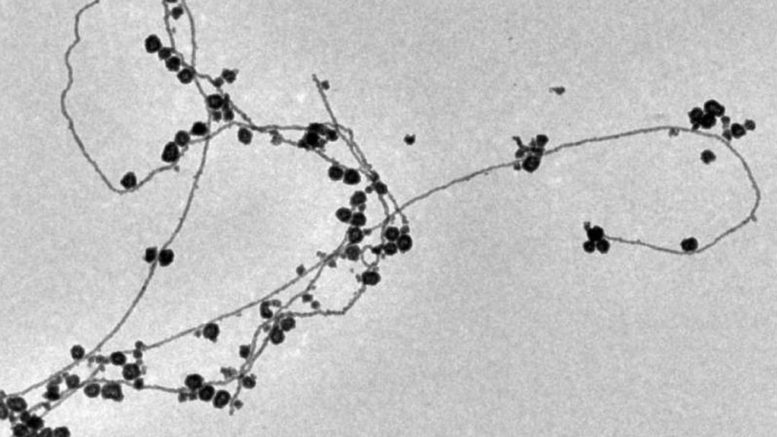A Michigan State University team of researchers discovered a bacterium can withstand toxicity to incredible amounts to create 24 karat gold. This is known as microbial alchemy and it will help scientists to turn a no value substance into a precious, solid metal.
This team was led by assistant professor of microbiology and molecular genetics, Kazem Kashefi. They were working with associate professor of electronic art and intermedia, Adam Brown. The team discovered that cupriavidus metalliduran, the metal tolerant bacteria grows on massive gold chloride concentrations or on liquid gold, that is a toxic chemical compound available in nature.
As per the research team, it is found that the bacterial is 25 times stronger and on combining the research with art installation known as ‘The Great Work of Metal Lover’ it uses biotechnology combination, alchemy and art to turn liquid gold into 24 karat gold. The sculpture has a portable lab, the bacteria and a glass bioreactor and it produced gold before the audience.
Brown and Kashefi fed the bacteria exceptional amounts of gold chloride and in a week’s time the bacteria transformed into a gold nugget. “This is referred as neo-alchemy. Here, every detail and part of the project is a cross between alchemy and modern microbiology,” said Brown. “Science explains the phenomenological world. While as an artist, I’m creating a phenomenon. Art can push scientific inquiry.”
The discovery of water microdroplets replacing toxic agents potentially in creating gold nanowires and nanoparticles ushers green chemistry.
“Being able to do reactions in water indicates there is nothing to worry about contamination. Its green chemistry” said Zare, the Marguerite Blake Wilbur Professor in Natural Science at Stanford.
Indeed, the team also observed that gold nanoparticle grew more than 100,000 times faster in microdroplets. The striking observation came while a control experiment was run in which they replaced the reducing agent that ordinarily releases gold particles with water microdroplets
“Much to puzzlement, we found the gold nanostructures could be made without reducing agents,” said Jae Kyoo Lee, study first author, a research associate.


Be the first to comment on "Stanford Scientists Create In Water Gold Nano Particles Without Any Reducing Agents"